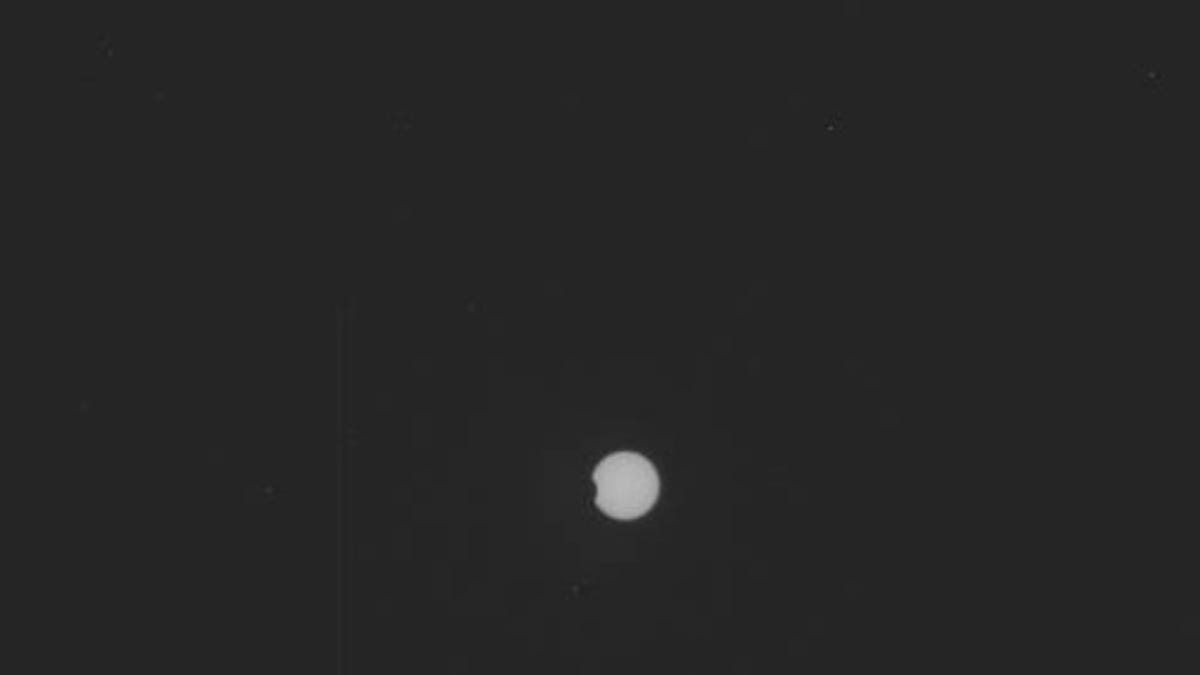Curiosity snaps photo of partial solar eclipse -- from Mars
Using a filter on its camera, the Mars rover creates a pinhole-like image of the Red Planet's moon Phobos transiting the sun.

Seeing as Mars is much further away from the sun than Earth is, a solar eclipse would look different than it does here. Curiosity -- NASA's Mars rover -- caught an image of what this phenomenon looks like from the Red Planet.
While somewhat less impressive than what a solar eclipse looks like from Earth, appearing as a tiny black blip on a small white blip, this photo is still fascinating. Mars has two moons that orbit it, so the moon seen in this image is called Phobos.
To get this photo, Curiosity -- ever the clever rover -- covered its camera with a neutral density filter so as to protect its lens, according to the Atlantic. The result is a pinhole-like image similar to what we earthlings do when documenting photos of the eclipse from here. Apparently, this filter downgraded the Martian sunlight to one thousandth of its normal intensity.
Curiosity has been snapping photos left and right ever since its harrowing, yet successful, landing in Mars' Gale Crater in the beginning of August. It is the most complex and scientifically powerful robotic spacecraft ever built to explore the surface of another planet and its mission is to look for organic compounds and signs of past or present habitability. The rover is equipped with 17 cameras, a 7-foot-long robot arm, and a suite of 10 state-of-the-art scientific sensors.While solar eclipses are not something that Curiosity sees everyday, they are much more common than on Earth. Phobos is closer to its planet than we are to our moon and therefore transits the sun more often. According to the Atlantic, Phobos will create another partial solar eclipse that can be seen from the Gale Crater in one year from now.
Previous Mars' rovers also documented eclipses. Below is a video of one of Mars' moons transiting the sun, which was caught by the rover Opportunity in November 2010.

